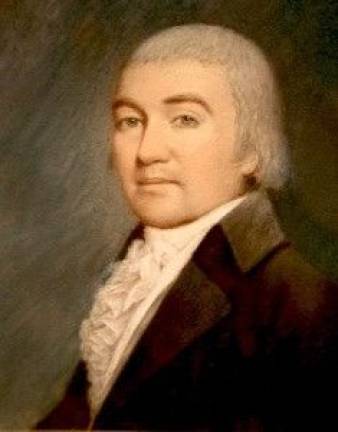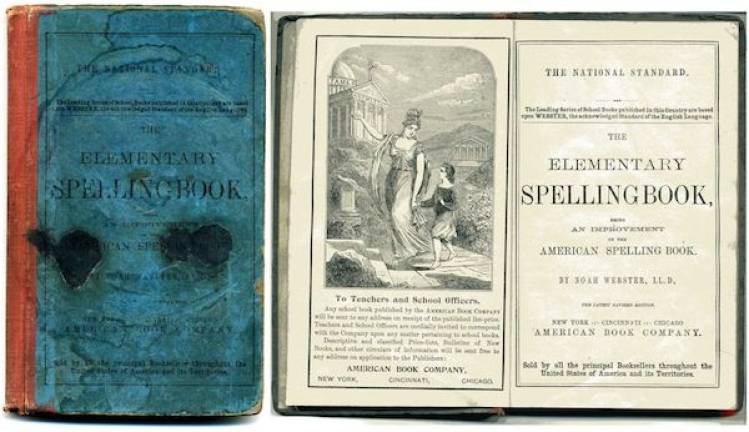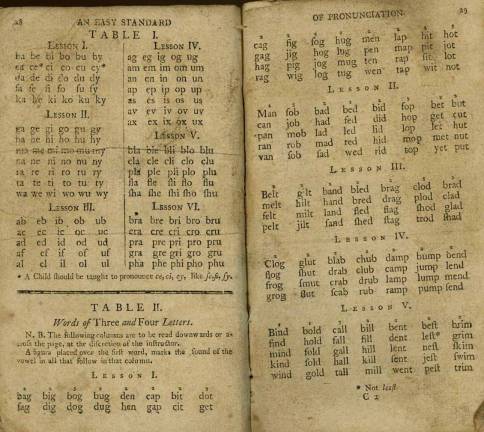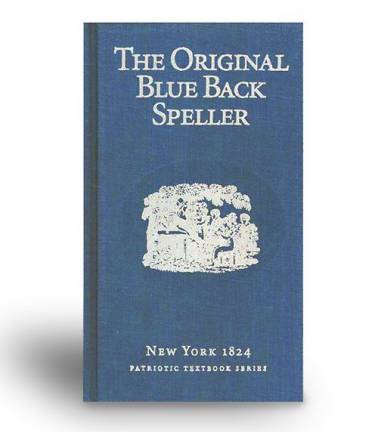'A man of unbounded vanity'




By Ginny Privitar
GOSHEN — Goshen was but a brief stopping place for the peripatetic Noah Webster Jr. (1758-1843). Yet it was here that he began work on the “blue-backed speller" that made him famous. More copies of the speller have been sold than any other book except the Bible, according to the Library of Congress.
It was the first of a three-part series titled “A Grammatical Institute of the English Language," consisting of a speller, a grammar, and a reader, published in 1783, 1784 and 1785, respectively. It was the right book for the right man: Webster was exacting in his thinking and writing, and always more at home with books than people. He described himself as having difficulty in interpersonal relations. He found comfort in his early love for words and the connections between them, and in defining words more precisely than had been done before.
Webster taught prosperous farmers’ sons at Farmers Hall Academy, on the site of the present Goshen Town Hall. The book, just about 3.5 inches wide by 6.25 inches long, was an instant success. It sold an estimated 100 million copies and was used for 100 years, through five generations, before it was gradually supplanted by McGuffey’s Eclectic Readers.
Webster, who had previously earned a law degree, would go on to become a well-known lexicographer, textbook author, teacher, spelling reformer, writer, editor, publisher, a legislator in two states, and an early proponent of copyright laws. He would undertake jobs in different locales, finally settling in New Haven, Connecticut.
His interests were varied — from the formation of the government of our new nation to the causes of yellow fever. He was also a prodigious letter writer and corresponded with George Washington and Ben Franklin, among others. Washington considered hiring Webster as a tutor to his step-grandchildren.
Webster may have originated the book tour, a tradition still dreaded by authors everywhere. He traveled through Connecticut, Massachusetts, New York, New Jersey, Pennsylvania, Maryland, Virginia, and beyond, promoting his books and lobbying for copyright laws to protect his intellectual property.
Proud of his family’s lineage, Webster would at age 78 print a family genealogy, one of the first of its kind in America.
Webster attended a local primary school at age 6. His early schooling may have spurred his desire to improve American education.
Schools of the time were Spartan. Students sat on benches, and only the teacher had a desk and chair. According to biographer Joshua Kendall, much of the day was spent chopping wood for the stove.
Webster later gave vent that most days had been “spent in idleness, in cutting tables and benches in pieces, in carrying on pin lotteries or perhaps in some roguish tricks.”
He, like other students, spent only a few months of the year in school. The rest of the time, he worked on his family’s farm.
Teachers had few books other than religious texts and “A New Guide to the English Tongue,” a speller by the Englishman Thomas Dilworth, whose work Webster would improve upon and make more accessible for children.
Webster’s best-selling speller would support him and his family in comfort for most of his life. This allowed him to devote decades to his monumental work: An American Dictionary of the English language. He believed fiercely that the new nation should develop its own literature, and that American English would be a unifying force in this nation of immigrants.
An ardent American, Webster wrote essays that influenced the thinking of the nation's founders, and helped shape the direction and culture of the new country.
His biographer Joshua Kendall, in “The Forgotten Founding Father: Noah Webster’s Obsession and the Creation of an American Culture,” describes him as a man in mental torment, perhaps suffering from obsessive-compulsive disorder. Yet his difficulty, and perhaps even his vanity, was instrumental in the making of his masterpiece, which took decades. An American Dictionary of the English Language was first published in 1828, when he was 70 (an earlier, shorter version was published in 1806). It contained about 70,000 words, almost twice as many as found in the original English-language dictionary by Samuel Johnson.
Webster also added tables to the back of his dictionary, covering subjects like demographics, weights and measures, post office locations, and historical events. These were Webster’s own contributions to the dictionary concept.
Throughout his life, Webster would take on scholarly pursuits that involved marshalling vast amounts of information. He even published a version of the Bible, expunged of phrases that might be “so offensive, especially to females...in which they are required to read passages which cannot be repeated without a blush.”
After Webster's death, his family sold the rights to the dictionary to George and Charles Merriam. His work continues today in the Merriam-Webster Dictionary.
While working on the dictionary, living in different states, he also helped found Amherst College and served on the Massachusetts and Connecticut state legislatures.
Webster married Rebecca Greenleaf (1766–1847) on Oct. 26, 1789, in New Haven, Connecticut. They had eight children; one died in infancy. Webster is buried in New Haven's Grove St. Cemetery.
See related article for information about Goshen's "Noah Webster Weekend" planned for May 6 and 7: http://bit.ly/1T7sShM